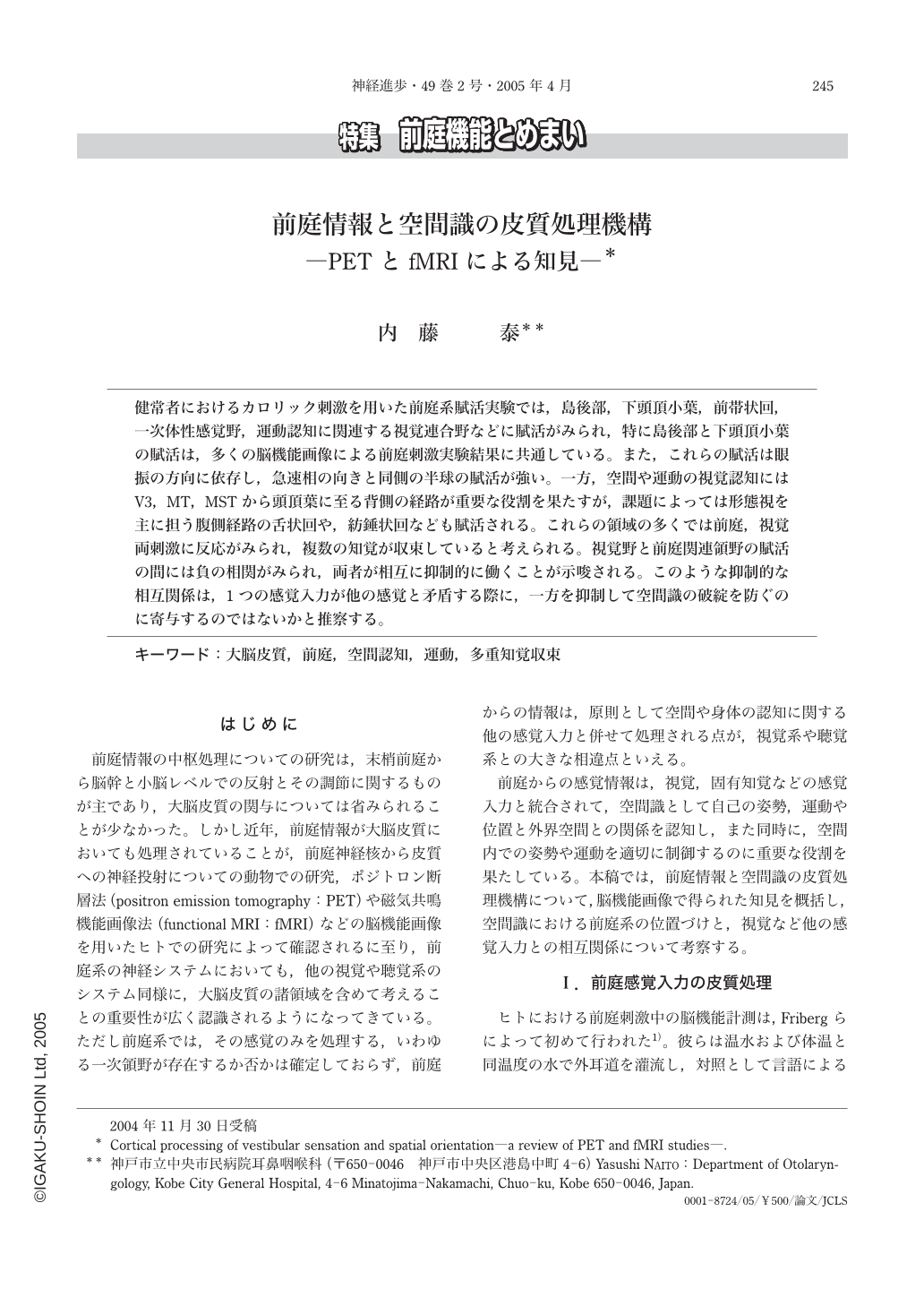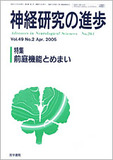Japanese
English
- 有料閲覧
- Abstract 文献概要
- 1ページ目 Look Inside
健常者におけるカロリック刺激を用いた前庭系賦活実験では,島後部,下頭頂小葉,前帯状回,一次体性感覚野,運動認知に関連する視覚連合野などに賦活がみられ,特に島後部と下頭頂小葉の賦活は,多くの脳機能画像による前庭刺激実験結果に共通している。また,これらの賦活は眼振の方向に依存し,急速相の向きと同側の半球の賦活が強い。一方,空間や運動の視覚認知にはV3,MT,MSTから頭頂葉に至る背側の経路が重要な役割を果たすが,課題によっては形態視を主に担う腹側経路の舌状回や,紡錘状回なども賦活される。これらの領域の多くでは前庭,視覚両刺激に反応がみられ,複数の知覚が収束していると考えられる。視覚野と前庭関連領野の賦活の間には負の相関がみられ,両者が相互に抑制的に働くことが示唆される。このような抑制的な相互関係は,1つの感覚入力が他の感覚と矛盾する際に,一方を抑制して空間識の破綻を防ぐのに寄与するのではないかと推察する。
PET and fMRI studies on cortical processing of vestibular sensation and spatial orientation were reviewed. Caloric vestibular stimulation activates multiple cortical areas including the retroinsular region(parieto-insular vestibular cortex:PIVC), inferior parietal lobule, anterior cingulate gyrus, somatosensory cortex, and motion sensitive visual cortices. The activation of the PIVC and inferior parietal lobule is commonly observed in various vestibular activation studies, and was lateralized depending on the direction of the nystagmus. Visual perception of motion and space is processed primarily in the dorsal visual pathway, in which dorsal cuneus, parieto-occipital sulcus area, MT, MST and parietal cortex play essential roles. However, lingual gyrus and fusiform gyrus in the ventral pathway also play important roles in visuo-spatial perception. In the parietal cortex, the intraparietal sulcus and inferior and superior parietal lobules are activated by various tasks that are related to visual perception of orientation, location and motion in space. In addition to these areas, visuo-spatial attention activates anterior cingulate gyrus and premotor cortex, and the insula and hippocampus are activated by tasks that are related to perception and memory of self-motion, and navigation in space. Most of these regions also become active by vestibular and somatosensory stimuli, and contribute to controlling ocular and body movements. Several imaging studies have demonstrated reciprocal inhibitory interactions among visual, vestibular and somatosensory systems. Inhibitory interaction between different sensory perception systems may contribute to developing consistent and unified self-image and achieving appropriate behavior in space when they disagree.

Copyright © 2005, Igaku-Shoin Ltd. All rights reserved.


